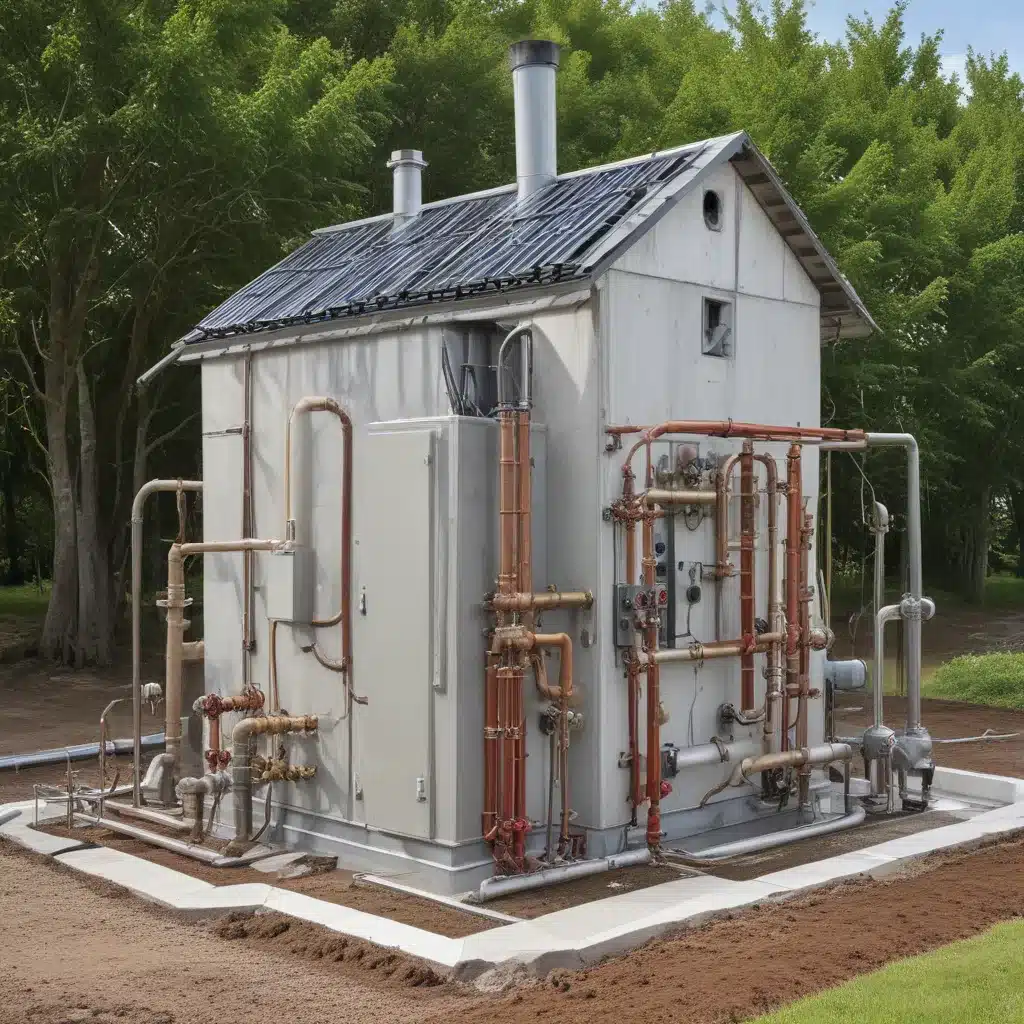
The Underground Heating Revolution
As a proud Aberdonian, I’ve always been fascinated by the way we harness the power of our natural surroundings. From the wind-whipped North Sea to the granite foundations that anchor our city, we’re no strangers to innovative solutions that put Scotland’s resources to good use. But the latest technology that’s got me truly excited? Geothermal heating and cooling.
You see, I’m a bit of a home improvement junkie. I’ve renovated my fair share of properties over the years, and I’m always on the lookout for ways to make them more energy-efficient and environmentally friendly. That’s why, when I first learned about geothermal systems, I was immediately intrigued. The idea of tapping into the Earth’s natural warmth to heat and cool my home – it just seemed too good to be true.
As the Department of Energy explains, geothermal heat pumps have been around since the late 1940s, but they’re only now starting to gain serious traction. These systems use the relatively constant temperature of the ground just a few feet below the surface to exchange heat with your home, providing efficient heating in the winter and cooling in the summer.
Tapping into the Earth’s Endless Warmth
Now, I know what you’re thinking: “But Aberdeen is freezing for half the year! How can the ground possibly be warmer than the air?” Well, my friends, that’s the beauty of geothermal technology. According to the experts, the ground temperature just a few feet down remains a toasty 45°F to 75°F, regardless of what’s happening up on the surface. It’s like a cozy underground cave, keeping the warmth in and the cold out.
Geothermal systems tap into this natural resource by circulating a fluid (usually an antifreeze solution) through a closed loop buried in the ground or submerged in a body of water. In the winter, the fluid absorbs heat from the ground and transfers it to the heat pump, which then distributes warm air throughout your home. In the summer, the process is reversed, with the heat pump extracting heat from your home and transferring it to the cooler ground.
It’s a brilliantly simple concept, but the real magic happens in the efficiency of these systems. As WaterFurnace explains, geothermal heat pumps can be up to four times more efficient than traditional furnaces or air conditioners. That means lower energy bills, fewer greenhouse gas emissions, and a smaller carbon footprint for your home.
The Endless Possibilities of Geothermal
Now, I know what you’re thinking: “Okay, this all sounds great, but how do I actually get a geothermal system installed?” Well, that’s where things start to get a little bit more complicated. You see, there are a few different types of geothermal systems, and the best one for your home will depend on a variety of factors.
According to the r/geothermal subreddit, some of the key considerations include your local climate, the soil conditions, the available land, and the cost of installation. For example, if you have a large yard, a horizontal closed-loop system might be the way to go. But if space is tight, a vertical closed-loop system could be the better option.
And then there’s the open-loop system, which uses groundwater as the heat exchange fluid. This can be a great choice if you have access to a reliable water source, but you’ll need to make sure you’re following all the local regulations and environmental guidelines.
Honestly, the options can be a bit overwhelming, but that’s where the team at ABC Home comes in. As Aberdeen’s premier building and renovation company, they’ve got a wealth of experience when it comes to geothermal systems. They can help you assess your property, crunch the numbers, and figure out the best solution for your home and your budget.
The Long-Term Rewards of Geothermal
Now, I know what you’re thinking: “Okay, but how much is all of this going to cost me?” And that’s a fair question. Geothermal systems do tend to have a higher upfront cost than traditional HVAC setups, with the installation often running into the tens of thousands of pounds.
But here’s the thing: those initial costs can be well worth it in the long run. According to WaterFurnace, geothermal systems can save homeowners thousands of pounds on their annual heating and cooling bills, with some seeing a 53% reduction in costs. And that’s not even factoring in the potential for government incentives and tax credits, which can further offset the initial investment.
Plus, geothermal systems are built to last. The indoor components typically have a lifespan of 20-25 years, while the ground loops can last for 50 years or more. That means you’ll be enjoying the benefits of efficient, eco-friendly heating and cooling for decades to come.
The Future is Geothermal
As I wrap up this deep dive into the world of geothermal heating and cooling, I can’t help but feel excited about the future of this technology. It’s a game-changer for homeowners like myself who are looking to reduce their carbon footprint and save money on their energy bills.
And you know what? I’m not the only one who’s caught the geothermal bug. According to the Department of Energy, there are around 50,000 new geothermal systems installed in the United States every year. And with more and more people becoming aware of the benefits, I can only imagine that number is going to keep growing.
So, if you’re in the market for a new heating and cooling system, or if you’re planning a home renovation project, I’d highly encourage you to give geothermal a closer look. It might just be the underground revolution that your home needs. And who knows – maybe I’ll see you at the ABC Home showroom, comparing notes on our geothermal setups. After all, we Aberdonians have to stick together, right?
















